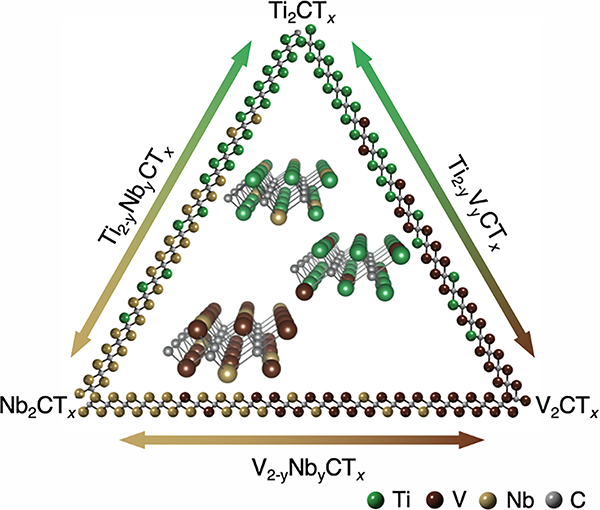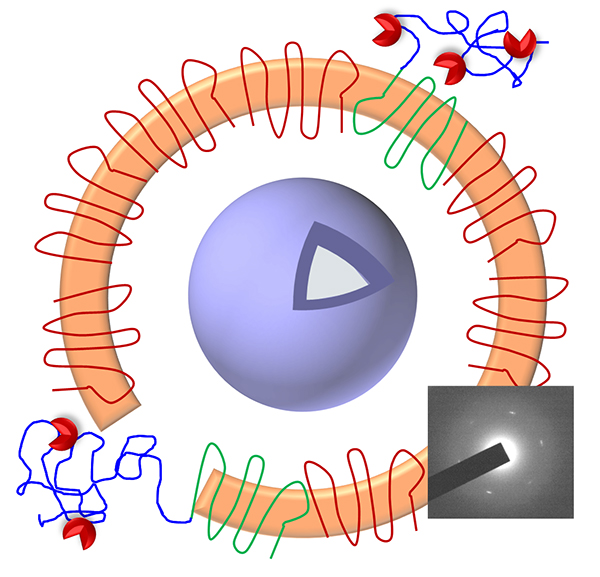
Distinguished University and Charles T. and Ruth M. Bach Professor Yury Gogotsi is the recipient of a four-year NSF grant from the Division of Materials Research, “Synthesis and Optoelectronic Properties of Solid Solution MXenes.” This proposal will look to establish direct experimental relationships between chemical compositions of solid solution MXenes and their resulting properties.
MXenes are a large class of two-dimensional (2D) carbides and nitrides discovered in Drexel’s Department of Materials Science and Engineering a decade ago that exhibit exceptional electronic, optical and charge storage properties. Their unique combination of electronic conductivity and tunable optical properties, such as a wide range of plasmonic colors, may be a game-changer in optics and electronics. Despite the total number of publications on MXenes approaching 3000, just a few solid solutions (structures with a random mix of metal atoms) have been reported. Solid solution MXenes that are synthesized in this study will greatly expand the family of 2D materials and offer an opportunity for precise tuning of electronic and optical properties of MXenes. These materials can have applications in the manufacturing of transparent conductive electrodes for solar cells, smart windows, transparent heaters, optical filters, and more.

Professor Christopher Li is the recipient of a four-year NSF grant from the Division of Materials Research, “Controlled symmetry breaking in semicrystalline polymer crystalsomes.” This proposal will investigate structural control of polymer crystals.
Semicrystalline polymers constitute the large majority of polymeric materials in use today. While the basic symmetries of polymer crystals are not different from their small molecular counterparts, the long-chain nature of polymers does significantly affect their crystallization behavior. Understanding the structure and morphology of semicrystalline polymers is crucial to improving their properties and broadening their applications. The overarching goal of this research is to achieve unique spherical polymer crystals by controlling the crystallization conditions and/or the polymer molecular structure and to elucidate the morphology and the fundamental molecular-level processes involved in such curved-crystal growth. It is anticipated that these well-controlled spherical crystals may find applications in the fields of drug delivery and immunotherapy.